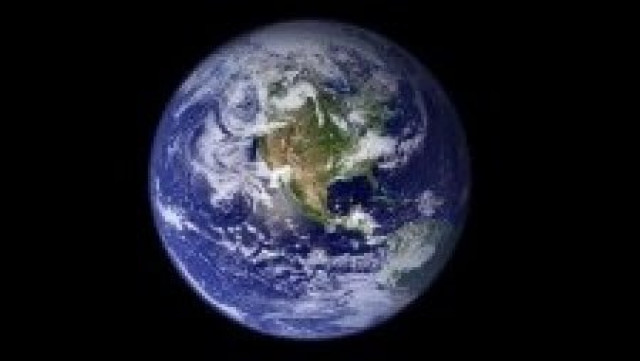Documentary screenings: Planet Earth’s aesthetically pleasing visuals enthral natural history buffs
Florescent marine life, warm sunsets and excruciating cold on North and South poles showcased.

PHOTO: AFP
Natural history buffs got their fix at a second round of “Planet Earth” documentary screenings at Kuch Khaas on Monday.
They feasted on the high-definition visuals, digesting information about the planet which remains largely unexplored. Co-produced by the BBC and Discovery Channel, each 50-minute episode leaves the audience pondering over the beauty and vulnerability of the planet they inhabit.
“Caves” takes the viewer on a trippy ride. Base jumpers plunge as deep as 400 metres into Mexico’s Cave of Swallows, which could house New York City’s Empire State Building.
Divers explore the depths of Yucatan Peninsula, giving the illusion of “flying in air.” The rare species in this land see perpetually no sunlight which is why the subterranean crabs have no skin pigment and eyes.

Layers and layers of the Gomantong Cave are covered in bats’ dropping, which hundreds of thousands of cockroaches feast on. One-third of the world is desert, the narrator says in “Deserts,” however the scars on the earth’s face are not lifeless.
Elephants drudge through Gobi Desert in Siberia as they brave extreme temperatures. The video also sweeps through the vast Sahara Desert in Africa, the world’s greatest source of dust and sand.
Finally, “Ice Lands” traverses the Arctic and Antarctica, where wildlife faces its own challenges. The areas remain frozen all year round but this eerie silence is broken with the arrival of snow petrels.
One rather interesting feature is of male penguins serenading to attract their female counterparts. Their courtship appears in a movie-like sequence, with the mothers giving their newly-hatched eggs to the fathers, who protect them through the coldest winters.
The back-to-back screenings offered a retreat from the sweltering heat into the imagery of the florescent marine life, warm sunsets and the excruciating cold on the North and South poles.
Aisha Amir, a housewife who had brought her two daughters along to the screening, particularly enjoyed watching “Caves.”
About the overall experience, she said, “it was very interesting and informative. Normally, you see such things in animations like Ice Age but here, it shows you the actual realities of life. I’m overwhelmed.” She also enjoyed the scenes depicting the emperor penguins and males tending to their newborns.
One of her daughters, Shaharzade, was just as intrigued. “I love documentaries. It’s interesting to know more about the planet you live on and what you are going to do with it once you grow up,” she said.
“I think the series adds perspective to life. Take for example the polar bear that was starved to death. We don’t realise how our lives on earth are impacting those of the creatures way up there. It tells you about the global challenges we are all faced with,” said Shezreen Shah.
Another audience member, Hassan, also drew a sobering conclusion. “Hardship is not new to us as humans but we really get a glimpse of what these different species have to put up with in their own habitats,” he said.
Published in The Express Tribune, July 23rd, 2013.



















COMMENTS
Comments are moderated and generally will be posted if they are on-topic and not abusive.
For more information, please see our Comments FAQ